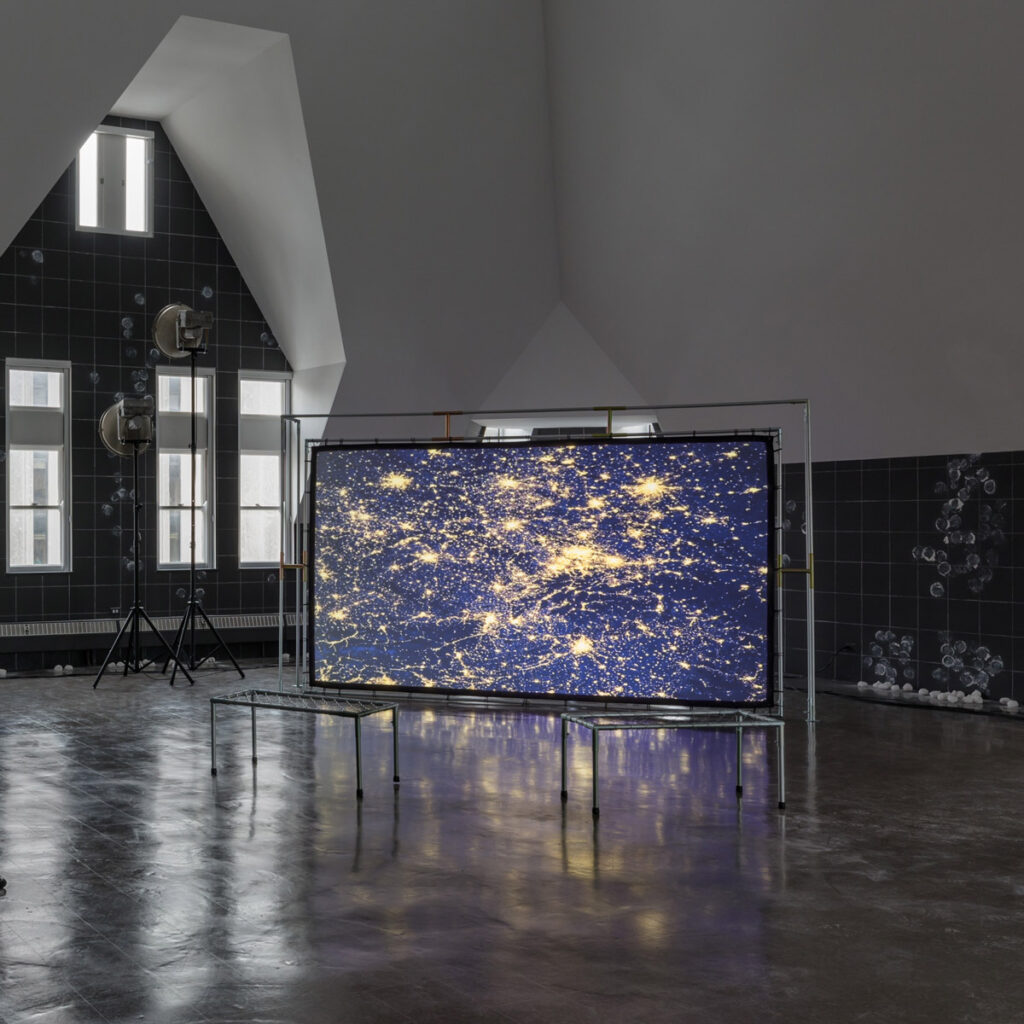Categories
Jill Magid and Shannon Lee DawdyTender: Balance
Monday, April 19, 2021, 6:00pmArtist Jill Magid joins 3CT co-director Shannon Lee Dawdy in conversation about Magid’s Renaissance Society exhibition, Tender: Balance (April 10–May 23, 2021).
In each of her in-depth projects, Jill Magid’s work takes shape as she becomes intimately involved with different structures of authority, whether government bureaucracies, a secret service agency, or the guardians of other artists’ estates. Gaining access through systemic loopholes or contact with people on the inside, she closely follows the prescribed rules of engagement with each institution. In a way, she becomes a stand-in for any person trying to navigate something much larger than themselves.
As the COVID-19 pandemic began, the interactions between individuals and larger systems quickly came into starker relief. Magid was especially struck by the pervasive language in which the loss of human life has been weighed against the costs for the economy. In response, she began developing Tender, “a monumental but nearly-invisible public artwork”—initiated and produced with Creative Time in New York— that circulates among us, and an exhibition at the Renaissance Society that gives expression to the project in a different way, concentrated in one location.
3CT co-director and anthropologist Shannon Lee Dawdy works across methods and time periods to question how landscapes and material objects mediate human relationships, whether in the wake of disasters or within historical ecologies of capitalism, and how shared cultural experiences affect our perceptions of time. Her latest research has focused on rapidly changing death practices in the US.
This event is free and open to the public; registration is required. Live captioning will be provided. Please email us at ccct@uchicago.edu if you require any accommodations to enable your full participation.
Presented by the Renaissance Society at the University of Chicago in partnership with 3CT.
Jill Magid is an artist, writer and filmmaker. She has had solo exhibitions at institutions around the world including Museo Universitario Arte Contemporáneo (MUAC), Mexico City; Tate Modern, London; Whitney Museum of American Art, New York; Berkeley Museum of Art, California; Tate Liverpool; the Stedelijk Museum Bureau, Amsterdam; and the Security and Intelligence Agency of the Netherlands. Magid has participated in the Liverpool, Lyon, Bucharest, Singapore, Oslo, Busan, Incheon, and Gothenburg Biennials, as well as Performa and Manifesta. An adjunct professor at Cooper Union, Magid is the author of four novellas. Her first feature film, The Proposal, premiered at Tribeca Film Festival in 2018 and was recently released in theaters across the US with distribution by Oscilloscope Labs. Magid is the recipient of the 2017 Calder Prize.
Shannon Lee Dawdy is Professor of Anthropology and of Social Sciences in the College and co-director of 3CT. Dawdy is an interdisciplinary scholar who works across methods and time periods. Her current work can be understood as an archaeology of contemporary life. Her regional focus has been on the U.S., Caribbean, and Mexico. A central thread running through her work concerns how landscapes and material objects mediate human relationships, from the historical ecologies of capitalism to the emotional trajectories of those who lost their intimate object worlds to Hurricane Katrina. Another theoretical interest is temporality—how pasts, presents, and futures shape social life and political possibilities. Her current research focuses on rapidly changing death practices in the U.S., particularly around disposition and transformation of the body. Collaborating with a filmmaker, one domain of the project experiments with how to make a documentary film with an archaeological eye. Dawdy is a past MacArthur Fellow and has received funding for her fieldwork from the National Science Foundation and the National Endowment for the Humanities.

